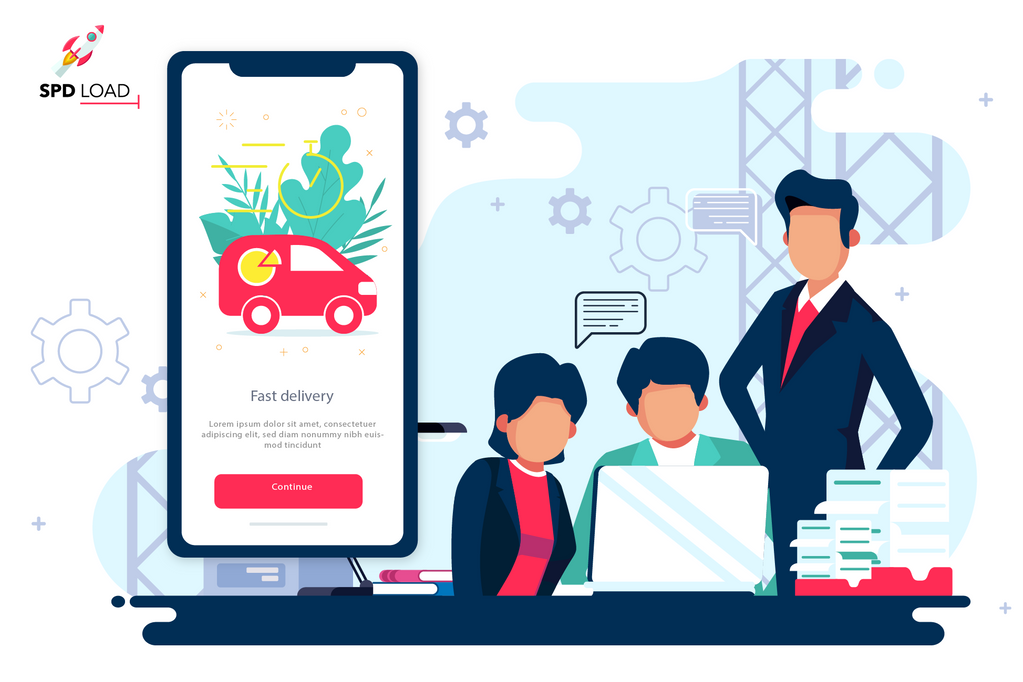Navigating through Various Types of Food Delivery App Business Model

The success of a food delivery model depends on its niche customer segment. And today’s customer is highly motivated to use online services that offer convenience and ease of use.
By 2024, the global food delivery market will be valued at $182.3 billion; thus, choosing the right business model is vital to reach success.
However, the journey to develop a successful product won’t be easy. The cut-throat competition makes the entire environment intense.
Due to this, the operating expenses might also shoot up as your marketing efforts need more fuel for better outreach.
Having said that, the initial step in any kind of business is its model, and the same goes for food delivery.
That is why we are going to talk about the most lucrative online food delivery business models in this guide.
Why are the majority of Food Delivery models based on the app?
Not just a simple brick and mortar application, but you need a custom food delivery app for your business model.
There are several reasons why users are more inclined to use a mobile application for ordering meals.
Convenience
Saves Time
Mobile Penetration and Ease of Use
The Appeal Factor
Apart from these major factors, a few other factors that ensure an application’s importance are:
· Interface
· Payment Systems
· Faster Performance
· Easy Visibility
· Can be downloaded
It is evident that any food delivery venture needs an app, let’s discuss some models that you can go for.
Choosing the right Food Delivery Business Model
To operate a successful food delivery business, you must choose the right model.
Read on to know about the top business models.
1. Order Only Model
As a starting point, the order-only model is an impressive food delivery business model.
Some might also call it a Platform to Consumer business model. In the US alone, the P2C segment is on its way to reaching $96,864 million by 2024.
The owner of the application connects the end-user with an eatery or a restaurant.
However, the onus of delivering the meals rests on the restaurant’s own fleet or any other 3rd party courier service provider.
Usually, you would have a vast network of restaurants enlisted in the application. Further, it is essential to provide the diverse menu options to the user via the app.
2. Order and Delivery Model
Going one step ahead of the order-only service, this food delivery model also takes care of the logistics.
For the restaurants, this kind of operational setup is ideal as they don’t have to look for courier guys.
The best part is that your business model will also bring its own user base along with operationalizing food delivery.
The pre-existing customer base is most beneficial for the restaurant owners.
Even though Grubhub (34%) leads the charts with the highest usage share in the US, UberEats (24%) bags the second position.
Out of them, UberEats works on the online food order and delivery business model.
The majority of the functioning of this type of food delivery app business model is similar to the previous version.
The delivery of food also rests on your shoulders; thus, establish high standards for this type of business model.
However, by including the transport aspect, you can also earn revenue from the customer side.
This kind of working model also consists of Milk-Run and Point to Point Deliveries.
3. Fully Integrated Food Delivery Model
Also called the Full Stack Model, here one service provider takes care of the entire food chain.
Right from preparation to drop-off, this online food delivery business model is unique and warrants a high capital investment.
To prepare the food, you can further take two different routes:
· Set up your own kitchens and hire the entire staff.
· Hire cloud-kitchens or ghost kitchens. They will prepare the food that will be delivered to the customer under your banner.
However, the food preparation facilities are not open to a dine-in.
They are only responsible for preparing the food and handing it over to the delivery department.
In this food delivery business model, you will be responsible for maintaining quality standards.
Not just in the delivery aspect, but also in the preparation of the food too.
4. Restaurant to Consumer Model
The last major type of business model that you can have in food delivery is taking the food your restaurant to the drop off point.
By far, this is one of the most successful food delivery business models, case in point, Dominos and Papa John’s.
Such a business model requires developing a platform-specific food delivery app. Apart from this, they also have a website to help the customers place orders.
According to Statista, the restaurant’s overall market share of the consumer food delivery business model will reach $85,500 by 2024.
The on-demand food delivery models and systems have pushed other businesses.
They have motivated them to change or modify their digital strategies.
Want to build your own Food Delivery Business?
Looking for work with a food delivery app business model?
Well, at Spdload, we cater to any kind of app development for your business.
The cumulative market value of on-demand food delivery will reach $365 billion by 2030. Hence, this is the best time to start making your own application.
A personalized application for a food delivery business model will help out the uniqueness of your brand.
Our team of developers can cover the entire software development lifecycle process.
From ideation to designing, development, and launching, we have dedicated experts to help you navigate through.
With years of experience and expertise in the development, we can help you jump ahead of the competition. Contact us today to know more about services.
Learn more about food delivery app business model.
0 комментариев